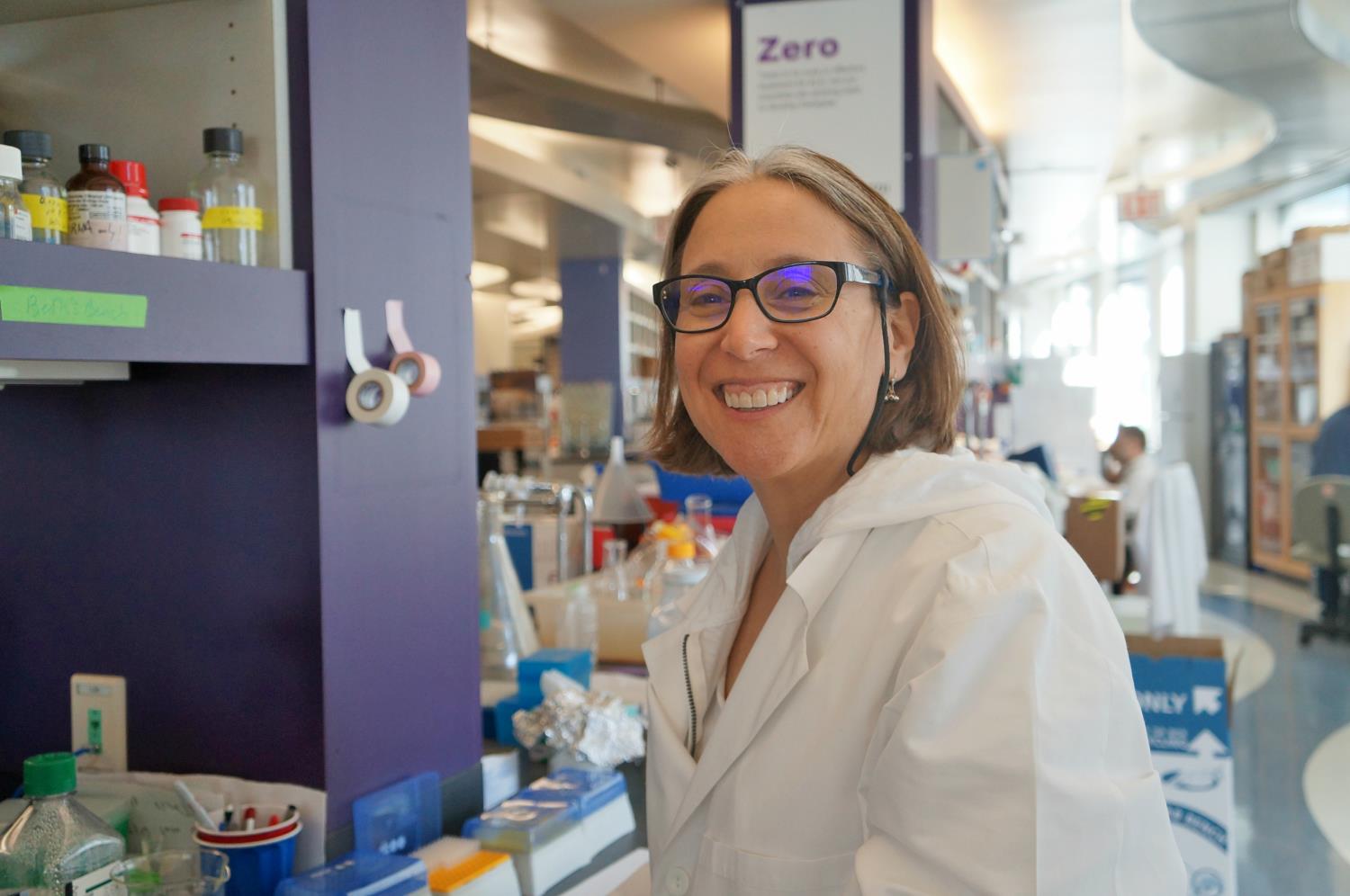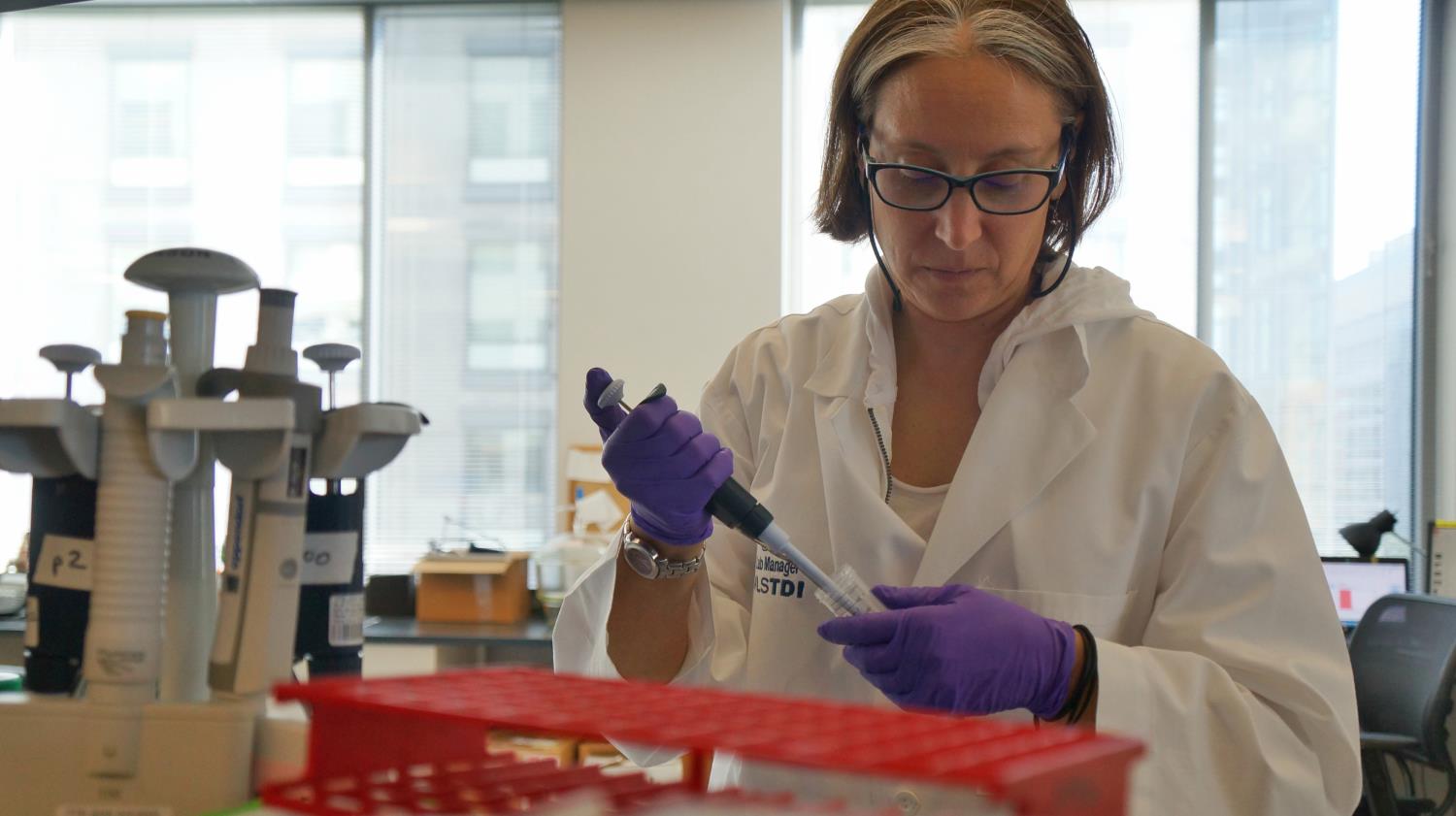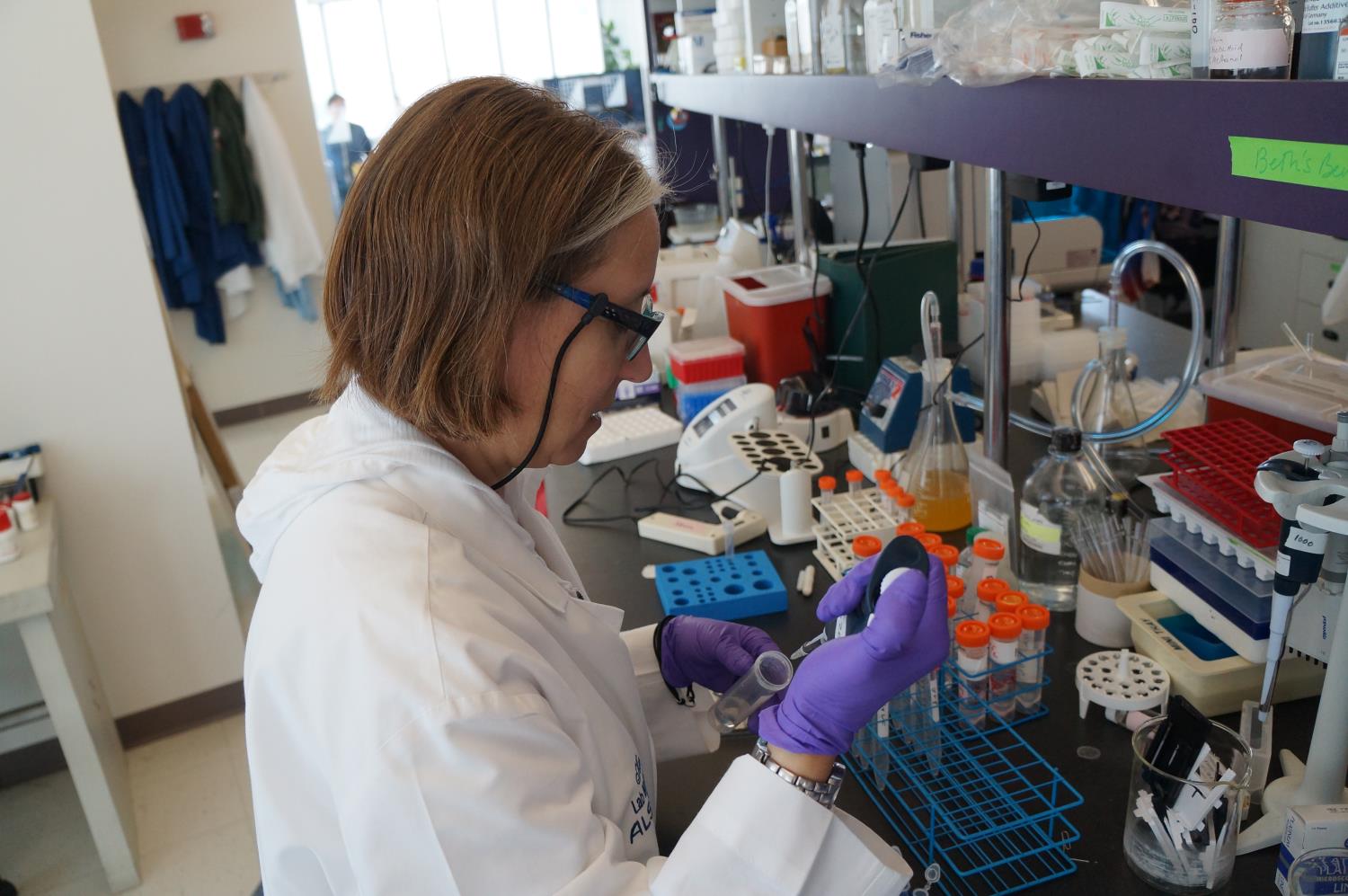
What is the best part of working at ALS TDI?
One thing most scientists have in common is an unquenchable desire to understand how things work. This can lead to years of being sequestered in a lab devoted to answering what can sometimes seem like abstract questions. This, in itself, is not a bad thing and some of the most important discoveries are made in just this way. However, the ALS Therapy Development Institute’s core design does not allow for research in isolation. Every day I am interacting not only with a wonderful group of scientists but also with a passionately devoted team of fundraisers, and through them, meeting and collaborating with people living with ALS and their families and friends. Every day I am inspired and motivated by all of these colleagues. I never have to ask myself, “What good can come from the work that I’ve done today?” because I am part of a team that is zealously committed to finding a treatment for ALS as soon as possible.
How did you find out about ALS TDI?
I saw the movie, “So Much, So Fast” about the Heywood Family.
Do you have a relationship to ALS?
I didn’t have any direct relationship to ALS before starting at ALS TDI, but over the years I’ve gotten to know many people living with ALS and their families.

What is your favorite thing to do in the lab?
Running a really great cell experiment. Doing the hands-on stuff well. Collecting and analyzing the data. Teaching the younger scientists and seeing them being able to contribute. Seeing them come up with great ideas and designing and running their own experiments.
What are you most excited about in research at ALS TDI right now?
At ALS TDI most people know about AT-1501 and our efforts to get that into the clinic and our Precision Medicine Program, but I’m currently more involved in research into the C9ORF72 gene.
For me, the discovery of the C9ORF72 gene mutation as a cause of ALS and FTD (frontotemporal dementia) about 6 years ago, was a really big deal. We now know that this gene accounts for most familial cases of ALS.
On a scientific level it’s really interesting. Most genes that we talk about in ALS and other diseases are what we call, “point mutations.” Genes are pieces of DNA made up of a long string of nucleotides that can be thought of as a long string of letters. It is important that the exact sequence of letters in a gene is correct, the same way it is important in language. If you substitute or remove a letter from a word, like substituting the “a” in “cat” with a “b” you end up with a word that doesn’t make sense. If you substitute or remove a nucleotide in a gene you can end up with a non-functioning or non-existing gene. A point mutation in SOD1 that causes ALS is the A4V mutation, the 4th letter of the SOD1 sequence, “A”, is substituted with a “V”. The C9OFR72 mutation is a repeat expansion mutation. In the C9ORF72 mutation, 6 letters of the DNA sequence are replicated hundreds or even thousands of times. As of today we have identified far fewer repeat expansion mutations than point mutations. We may be able to learn more about ALS by using what we already know about repeat expansion diseases to study the pathology of ALS. Anything that may hold a clue to a treatment is something we get really excited about!
What is your favorite piece of equipment you use in the lab?
The Flow Cytometer
The work that I do involves using cells as models for ALS disease. For example, you can create cells that have a TDP43 or SOD1 mutation and then study their biology.
Since cells are so tiny, even if you look at them through a traditional microscope they still look like little spheres, you can’t see much detail. The Flow Cytometer is an instrument that allows us to study a tiny piece of a cell. By attaching a fluorescent molecule, which is basically a glowing label, to a specific protein, for example SOD1, we can quantitate how many cells in a population contain SOD1 or what the average amount of SOD1 is in a cell. Then we can ask questions like, “How are the levels of SOD1 protein effected when the SOD1 gene is normal vs. when it contains the A4V mutation?” Answering these types of questions helps us to figure out what might be a good treatment for ALS.

What is the biggest challenge in your job?
At ALS TDI we are always trying to work as fast as we can to find effective treatments and a cure for ALS but so far we haven’t been able to work fast enough for so many people.
ALS is such a challenging disease for so many reasons. We still don’t know the cause or causes of ALS in most people. In 90% of cases there is no known genetic link to ALS. In all likelihood, ALS is not just one disease, it is many diseases with different origins so this makes finding treatments or a cure really difficult.
We also have to find more effective ways of measuring the disease so we can better test whether treatments are slowing or halting the progression of the disease. Members of the In Vivo team here at ALS TDI are the world experts in measuring ALS in mice. The PMP team is trying to develop methods to make us as good at measuring ALS in people as we are at measuring it in mice.
To add to that, even if we do pinpoint the causes of ALS, a lot of current promising treatments are biologics, like AT-1501. These are hugely complex and costly drugs which are inherently more difficult to make than small molecule drugs.
What is your favorite fundraising event/program at ALS TDI?
The Tri-State Trek, Corntoss, White Coat Affair Gala, I don’t want to leave any out, I guess I like all of them in their own way.
What do you do for fun outside of work?
I do some recreational biking and I love to read.
If you weren’t a scientist, what would you be doing?
I honestly don’t know.